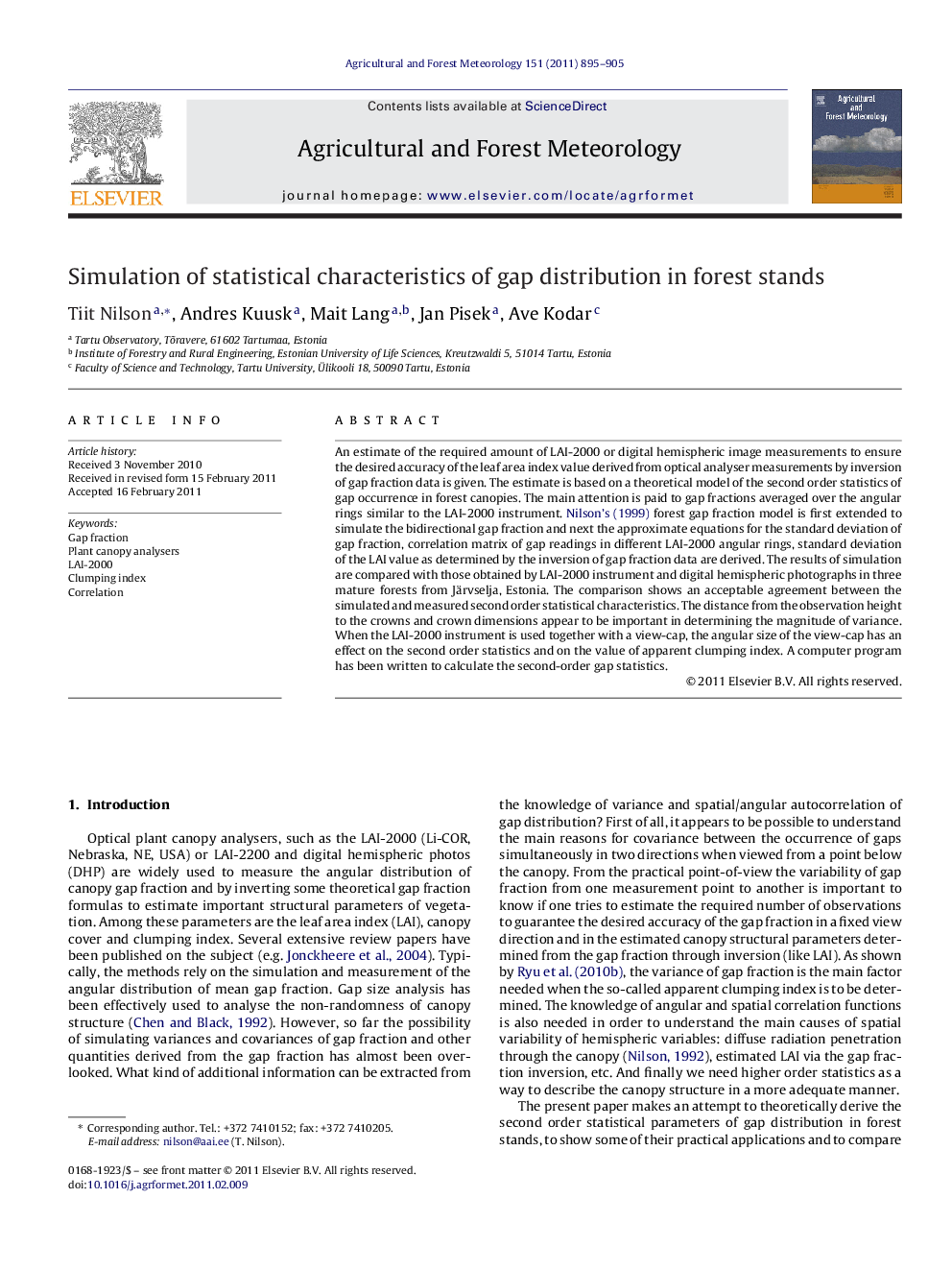| Article ID | Journal | Published Year | Pages | File Type |
|---|---|---|---|---|
| 82021 | Agricultural and Forest Meteorology | 2011 | 11 Pages |
An estimate of the required amount of LAI-2000 or digital hemispheric image measurements to ensure the desired accuracy of the leaf area index value derived from optical analyser measurements by inversion of gap fraction data is given. The estimate is based on a theoretical model of the second order statistics of gap occurrence in forest canopies. The main attention is paid to gap fractions averaged over the angular rings similar to the LAI-2000 instrument. Nilson's (1999) forest gap fraction model is first extended to simulate the bidirectional gap fraction and next the approximate equations for the standard deviation of gap fraction, correlation matrix of gap readings in different LAI-2000 angular rings, standard deviation of the LAI value as determined by the inversion of gap fraction data are derived. The results of simulation are compared with those obtained by LAI-2000 instrument and digital hemispheric photographs in three mature forests from Järvselja, Estonia. The comparison shows an acceptable agreement between the simulated and measured second order statistical characteristics. The distance from the observation height to the crowns and crown dimensions appear to be important in determining the magnitude of variance. When the LAI-2000 instrument is used together with a view-cap, the angular size of the view-cap has an effect on the second order statistics and on the value of apparent clumping index. A computer program has been written to calculate the second-order gap statistics.
► Simulated standard deviations of gap fraction agree sufficiently well with the results obtained by LAI-2000 and digital hemispheric photo measurements. ► The model is able to predict the standard deviation of leaf area index determined by optical analyser measurements and estimate the needed amount of measurements to get the leaf area index value with a desired accuracy. ► Crown dimensions and distance to crowns are the main determinants of the variability of gap fraction data.
